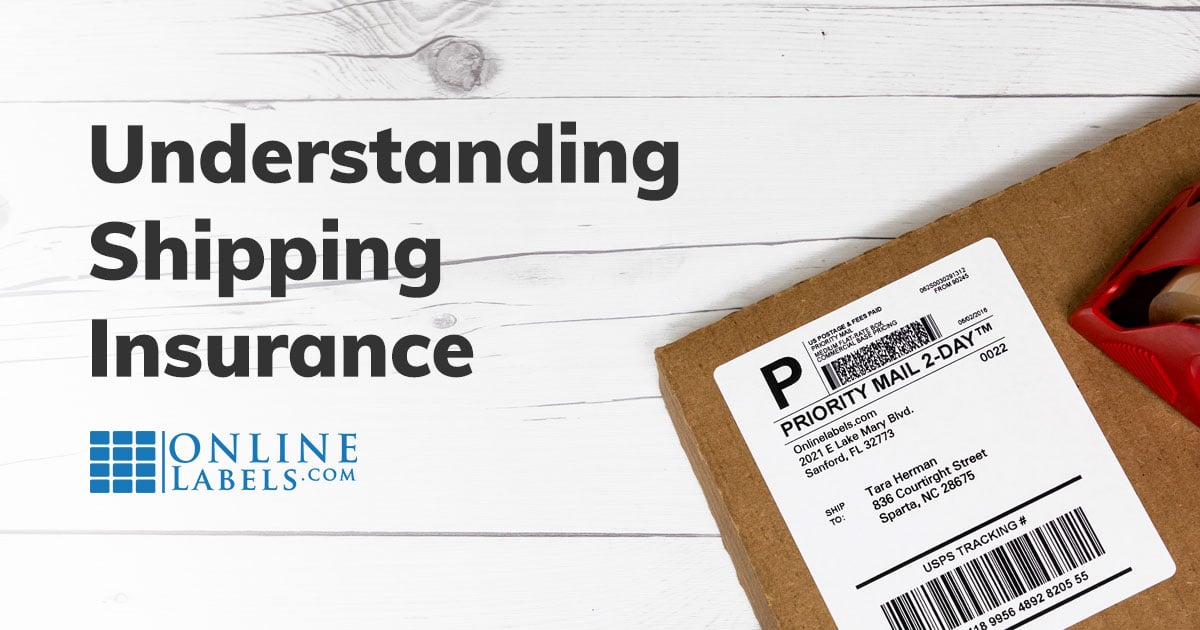What Is Shipping Insurance And Does My Business Need It?

It can feel like the jargon and fine print surrounding insurance policies are purposely complicated and hard to follow, just to put you off from ever reading them! But the truth is that when an item goes missing or gets damaged, the relief of having a bullet-proof policy is well worth the hassle.
These days, consumers are buying higher value items online, comforted by the promise of on-time and safe delivery. The days of showrooms, where people would go to see and feel their next purchase, look like they may be numbered. Instead, consumers are shopping online with the assurance of hassle-free delivery and generous return policies.
But when should you, as the seller, buy insurance for the goods that you ship to your happy customers? In this article, we're going to delve into the details of shipping insurance and help you figure out if and when you'll need it for your business.
Always Keep Records
It's vital to have clear return and refund policies for the goods you sell online, so your customer knows exactly what to expect in case of damage or loss. And on your end, it's critical to have a procedure in place to deal with these unexpected occurrences quickly and efficiently, as customers soon become impatient if you're slow to act. The more the customer feels looked after and valued, the more likely they are to come back for more.
Good shipping procedure will include keeping:
- Proof of the value of the item that's been shipped
- A record of shipment
- An accurate description of the goods
It's also important to submit supporting documentation when it comes to making a claim. This can include proof of the damage from the customer (if applicable) or an email from the client to confirm they haven't received their order.
Depending on whether you insure your goods with your carrier or a third party (more on this later), claims can take from 7 days to several weeks, so it's always good policy to deal with the customers refund, or send them out another order, while waiting for your insurance claim to come through.
Consider The Costs
So, do you actually need insurance for your shipping? That all boils down to the value of the items.
$100 Value Or Less
Some carriers include insurance with their service, so the first thing to do is carefully check what insurance is included in the cost of your postage. FedEx and UPS, for example, automatically take liability for your goods up to the first $100, and charge extra after that. USPS does the same, as long as you choose their 'express' service. Compare the major shipping carriers.
So if you're sending an item worth $200, shipping insurance up to a value of $100 isn't much good to you. Thus, if you're sending items with a value less than $100, the chances are your goods are covered by the carrier's standard policy.
Keep in mind that carriers' policies vary when it comes to how much insurance they offer, so don't assume their limits are all the same. However, you can use $100 as a rule of thumb.
If you're sending goods internationally, remember to double check that the carrier's insurance covers packages once they leave the USA. The same goes for when you're sending items such as dangerous goods or gemstones, as these are not covered by normal shipping insurance policies. Learn more about international shipping best practices.
$101 Value Or More
What do you do when your items are worth more than $100? You have three options:
- If you use a postal service or courier directly, you can declare the extra value to your shipper and pay whatever extra they charge to insure it.
- If you use an integrated shipping solution like Shipstation, they'll offer you insurance for high-value goods.
- If you don't want to use either of the above options, you can use a third party to insure the whole value of the shipment.
Now I know what you're thinking—if you get $100 worth of your goods insured for free with most carriers, then you can use a third party to insure the rest of the value. Not a good idea! Trust me, trying to make a claim from two seperate insurers is too complicated and time-consuming to be worth it.
Third-party shipping insurers, like Cabrella, usually offer the best prices and often for much lower than what your carrier will offer. If you think you'll be using this service regularly, it's worth shopping around and finding an insurer who will fulfill your needs for a good price. These companies even offer a function that automatically applies insurance if an order goes above a certain value, to save you from having to specify each time.
Disguise Your Package
While the unboxing experience is important, sometimes it can be a detriment to your brand. A hugely overlooked trick to ensuring fewer of your shipments are stolen is to play down your packaging.
'Porch Pirates' are much less likely to plunder your goods if they're packaged in plain, boring boxes. So sometimes, it's best to resist the urge to print your branding or product descriptions on the box.
You still want to choose packaging that protects your products, though. Check out some packaging tips for shipped goods.
To recap, you're likely to need shipping insurance if you're shipping high-value items, shipping internationally, or shipping 'excluded' products. But before you get started, be sure to check your carrier's policy to protect yourself and your customers.
The most important thing is that you have happy, satisfied customers leaving positive feedback, so always keep that at the top of your priority list. Now get out there and get shipping!
Need shipping labels for your packages? Shop shipping labels, or find the right size for your desktop label printer by shopping either blank labels on rolls or fanfold label.



